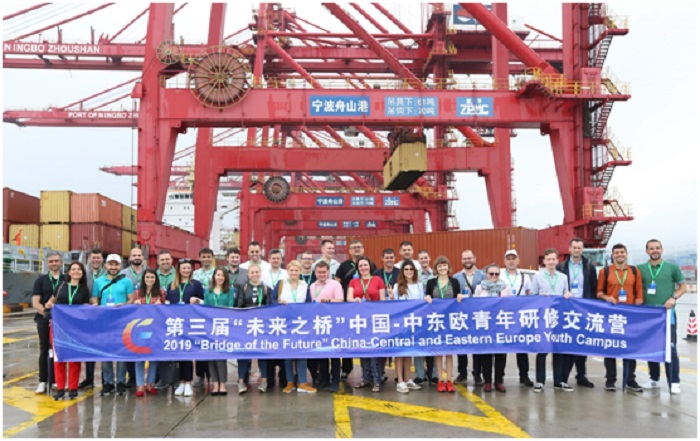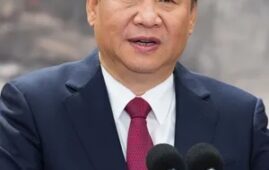



China needs to deepen agricultural cooperation with Central and Eastern European (CEE) countries in a bid to double CEE countries’ agricultural exports to China and raise two-way agricultural trade by 50 percent over the next five years, Chinese President Xi Jinping announced Tuesday in a keynote speech to the China-CEEC Summit via video link.
China intends to import, in the coming five years, more than $170 billion of goods from CEE countries, Xi said while chairing the summit in Beijing. The summit was originally scheduled for last April but was postponed due to pandemic.
China proposes setting up a farm produce wholesale market in the CEE region and introducing an exchange program for young agricultural professionals, Xi said.
With a high dependence on agriculture, CEE countries are set to see farm produce trade account for a bigger part of two-way trade with China, experts said, believing that the import target, especially a substantial rise set for agricultural trade, points to a much brighter picture for bilateral trade ties despite lingering concerns over the fallout of the COVID-19 pandemic on the global economy.
“It’s reasonable for China to expand goods imports from CEE countries over the next few years, especially agricultural products, given the need to narrow trade surplus with CEE countries to deepen cooperation,” Zhang Hong, a research fellow at the Institute of Russian, Eastern European and Central Asian Studies at the Chinese Academy of Social Sciences, told the Global Times on Tuesday.
He said that by expanding farm produce imports from CEE region is expected to help CEE countries recover their economies and walk out of recession, which reflects China’s willingness to shoulder responsibility.
China’s farm produce trade with 17 CEE countries – mostly comprised of livestock products, aquatic items, fruits and vegetables – hit roughly $1.46 billion in 2019, making up only 0.63 percent of China’s total farm produce trade, according to statistics from the Ministry of Agriculture and Rural Affairs.
Indeed, this will likely lead to competition between CEE countries and US agricultural products as China has pledged to increase imports of US agricultural and energy products in the phase one trade deal, but this is benign competition and will offer more choices for Chinese consumers, Zhang said.
China’s imports of farm produce from the US soared 66.9 percent year-on-year to 162.74 billion yuan ($25.29 billion) in 2020, per Chinese customs data. The country’s soybean imports from the US were up 56.3 percent over the past year, its pork imports from the US posted a surge of 223.8 percent, while cotton imports rose 121.7 percent and its crude oil imports jumped 88 percent.
Zhang said China and CEE countries should remove non-trade barriers and improve customs clearance convenience to boost bilateral trade.
China’s trade with CEE countries topped $100 billion for the first time in 2020, with an average annual growth of 8 percent since 2012, according to data from the Ministry of Commerce (MOFCOM).
“To enhance green development, we may take the China-CEEC Year of Green Development and Environmental Protection as an opportunity to deepen exchange and cooperation in green economy, clean energy and other related areas,” Xi said.
He also called for China and CEE countries to capitalize on various emerging business forms to widen bilateral cooperation on the digital economy, e-commerce and the health sector. China supports setting up a China-CEEC dialogue mechanism on e-commerce cooperation and a China-CEEC alliance in the public health industry.
By the end of 2020, Chinese cumulative foreign direct investment in CEE countries in sectors including energy, infrastructure and logistics totaled $3.14 billion, while those countries’ cumulative investments in China reached $1.72 billion, according to MOFCOM.
The summit participants jointly formulate a Beijing list of activities for cooperation between China and CEE countries. In the sphere of trade and investment, the participants support holding the 5th China-CEEC Customs Inspection and Quarantine Cooperation Dialogue in China, hosting the 4th China-CEEC Ministerial Conference on Economic and Trade Promotion in Ningbo, East China’s Zhejiang Province, among other high-level exchanges.
Presently, trade between China and CEE countries is nearly 85 percent bigger than nine years ago, and growth in China’s import from CEE countries is 22 percentage points higher than that of export. The number of mutual tourist visits has grown nearly five times. The China-Europe Railway Express has reached most of the CEE countries, running more than 30,000 freight services so far, Xi disclosed Tuesday.
China and CEE countries share the conviction that openness brings opportunities and inclusiveness ensures diversity. This is the key to the sustained vibrancy of China-CEEC cooperation, Xi stated.
China’s continued development and opening-up will inject powerful impetus into global economic recovery and growth, and broaden the horizons for China-CEEC cooperation, he said.
The Chinese economy recorded an expansion of 2.3 percent last year to become the only major economy with positive growth, official data showed.
In its latest World Economic Outlook released in January, the IMF forecast that China’s economy would grow 8.1 percent in 2021 before slowing to 5.6 percent in 2022. By contrast, the IMF’s projection for global economic growth tallies 5.5 percent in 2021 and 4.2 percent in 2022 after an estimated 3.5 percent contraction in 2020.
Source: Global Times


Cooperation between China and Nigeria had.



Nigerian government has urged trainees of.



Minister of State for Foreign Affairs,.


The Nigerian Government has congratulated the.


The Humanitarian Service Diamond Awards has.
A Chinese Company, Inner Galaxy Steel.


The Programme Coordinator, Regulatory, Compliance and.


A Non-Governmental Organization (NGO), Committee for.
The Trustfund Pensions Limited has chided.


The House of Representatives Committee on.
Leave a Comment